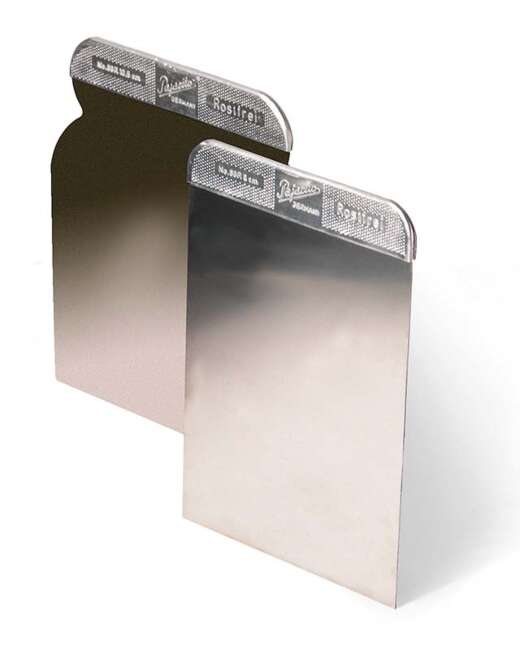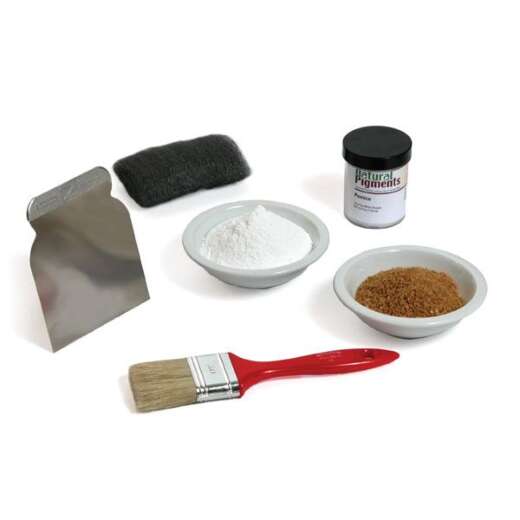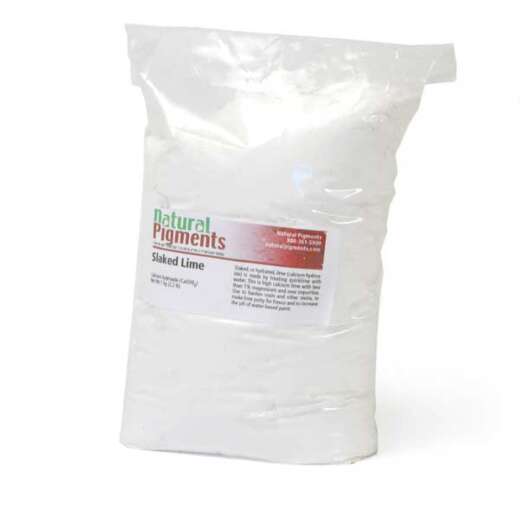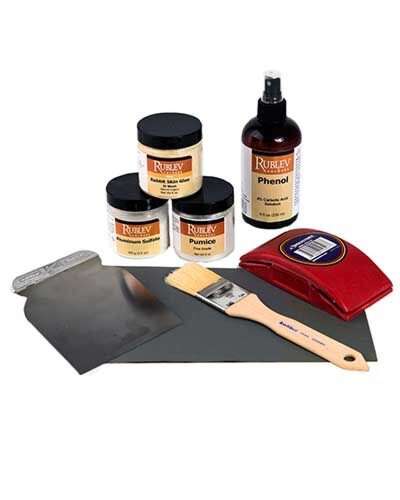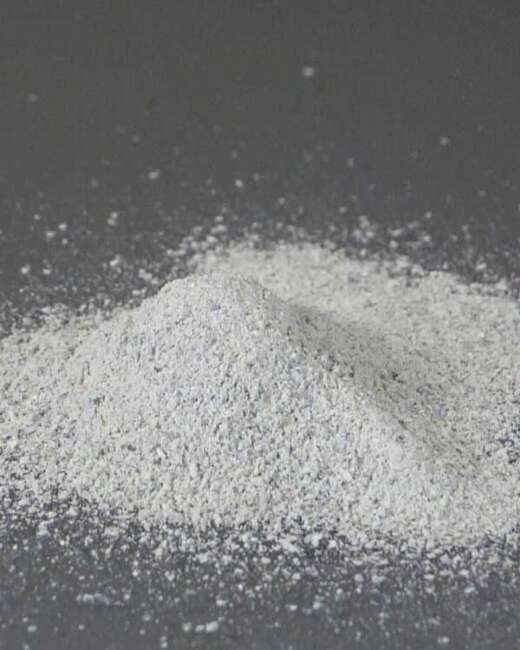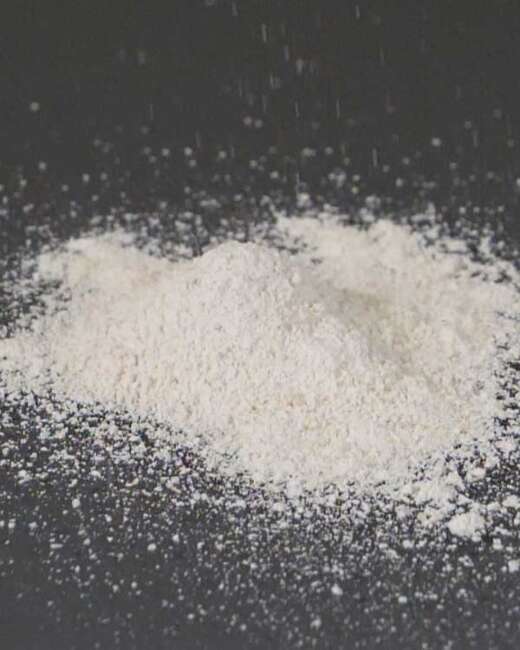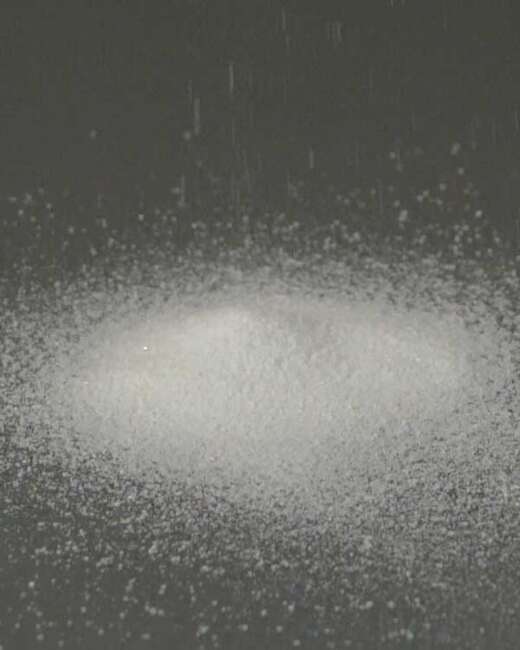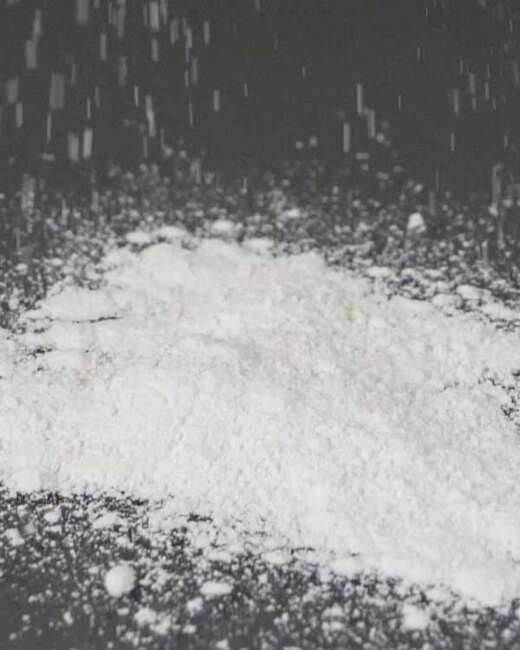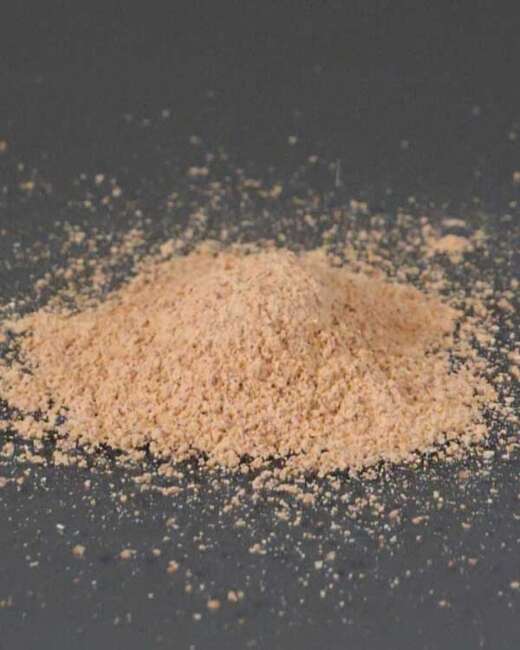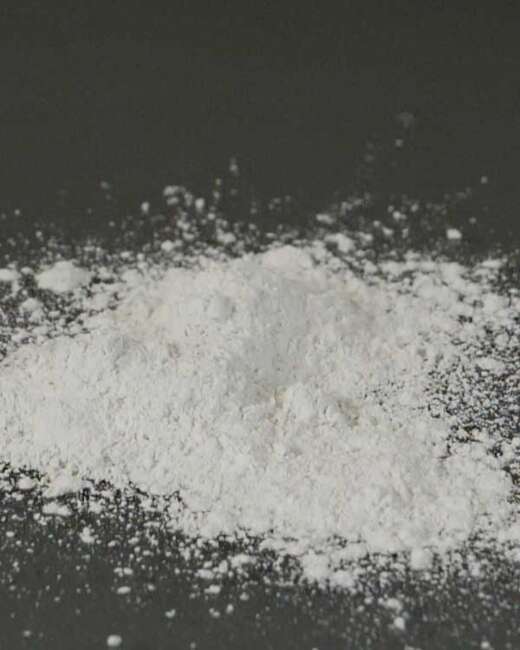Preparing Emulsion Grounds

Emulsion grounds typically consist of an emulsifying adhesive, such as animal collagen glue and vegetable oil with chalk and lead white. There are many formulas for emulsion grounds, also called “half-chalk grounds,” but the one herein we’ve tried and found works quite well if you follow the instructions carefully. This formula and its preparation are based on the Full Oil Ground described in Egg Tempera Painting, Tempera Underpainting, Oil Emulsion Painting.
The preparation described here is for canvas but can be easily modified by the reader to use on a wood panel. We have tested this ground on non-absorbent aluminum composite materials (ACM), and can be used successfully on these panels.
Preparing Glue-Water
Weigh seven parts of dry animal collagen glue (rabbit skin glue or hide glue) and put it to soak overnight in 100 parts by weight of cold water. Then heat the glue and water gently in a double boiler, ensuring it never boils. Too much heat kills the strength of the glue. We recommend not heating the glue over 140°F (60°C).
Glues vary in strength, so the above formula, 7 parts of glue to 100 parts of water by weight, is not necessarily invariable. The best test is that when allowed to cool for several hours, perhaps overnight, the mixture just barely jellies. If it remains soupy or liquid, there is too much water. If it sets in a stiff, rubbery jelly, there is too much glue. More water must be added.
Preparing and Sizing Canvas
Take a well-stretched raw linen canvas that has already been rubbed with a flat pumice stone, lay it flat on a table, and with a wide thin flat brush, apply the glue water to the canvas by brushing it on lightly, covering the whole canvas as evenly as possible. Most canvases are far too heavily glued. The ideal to be aimed at is that the glue should go just halfway through the canvas, but this isn't easy to achieve in practice. A certain amount always soaks all the way through. Use as little glue as possible each time you dip your brush. The canvas should not be scrubbed with a brush heavily loaded with glue. It becomes too brittle when dry and is liable to cause the ground to crack.
Set the canvas to dry, never in the sun or by a stove, for at least 24 hours, better two or three days, then rub it lightly again with the pumice-stone but only enough to soften the surface a trifle and raise a little nap. It is then ready for the ground.
Emulsion Ground Formula
1 part Glue-Water
1 part Chalk
1 part Lead White (pigment)
1 part Refined Linseed Oil
Take one part of chalk (ground calcite) and onepart of lead white, and mix the two thoroughly while still dry powder. Then take one part of glue-water (not too hot, just lukewarm) and add it slowly to the powder, stirring all the time with a spatula until all lumps or grains have disappeared and you have a perfectly smooth creamy mixture.
Note: For those unaccustomed to using the formula, this does not mean that you add a measure of glue-water equal to the chalk and lead white combined. It means that if one cup is the measure used, you take one cup of chalk, one cup of lead white, and one cup of glue-water.
When the mixture has cooled somewhat, but before it stiffens, add the linseed oil. A full measure of the oil is used: one measure equal to the unit measure used for the glue-water, chalk, etc. The mixture should be quite cool before the oil is added, as it will not take the oil well when hot. Add the oil drop by drop at first, and later a little at a time. When doing so successfully, the oil should disappear almost immediately into the creamy mixture as it is stirred. If it remains on the surface separate from the mixture, you are adding the oil too fast. Sometimes, making the mixture take the full amount of oil is difficult, but prolonged stirring will make it absorb the full amount.
Applying the Emulsion Ground to Canvas
Lay the canvas flat and with the same sort of brush as that used for the gluing. Apply this mixture lightly. Care must be taken not to use the brush too heavily charged. As in the gluing, the ground should go only halfway through the canvas and not soak through. On no account should it be scumbled on or heavily scrubbed on. As soon as the canvas is evenly covered, take a surface knife or scraper and lightly scrape it, taking long steady strokes with the knife first lengthways, each stroke the full length of the canvas, and then sideways, at right angles to the first scraping, each stroke the full width of the canvas. This should be enough scraping, but if there seem to be spots where there is still too much ground, scrap it again lengthways and sideways. If there is a tiny spot or two where the canvas shows through the ground, this can be touched up with a drop of ground, but it must be done quickly, for the ground sets very soon into a state where it is liable to pull off or roughen if touched or rubbed.
Apply two or three coats to the canvas, scraping each one and waiting 5 to 10 minutes between each coat. Allow it to dry for at least two weeks before using.
This gives an excellent non-absorbent ground for oil painting when oil paint's full gloss or shine is desired. Owing to the large quantity of linseed oil in it, this ground is liable to turn very yellow if stored in the dark for any length of time; but if exposed to the light before using, it returns to its usual creamy white. To reduce this yellowing tendency to a minimum, use sun-bleached linseed oil.
Where To Buy Materials In This Article
Source
Vaclac Vytlacil and Rupert Davidson Turnbull, Egg Tempera Painting, Tempera Underpainting, Oil Emulsion Painting: A Manual of Technique, New York: Oxford University Press 1935, pp. 36–44.



